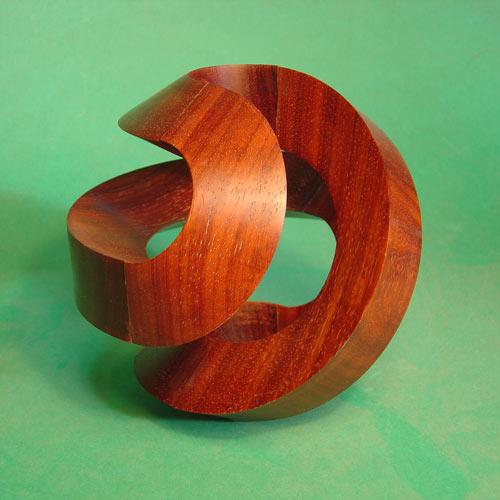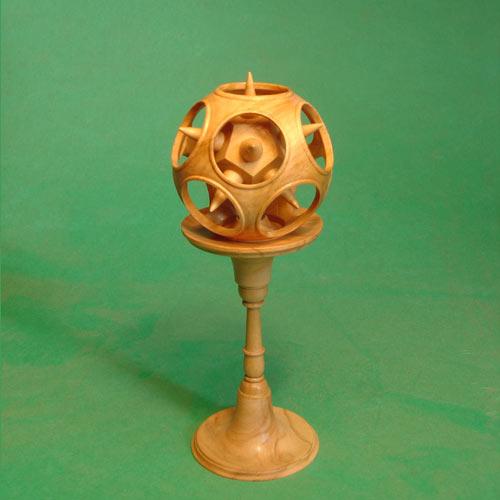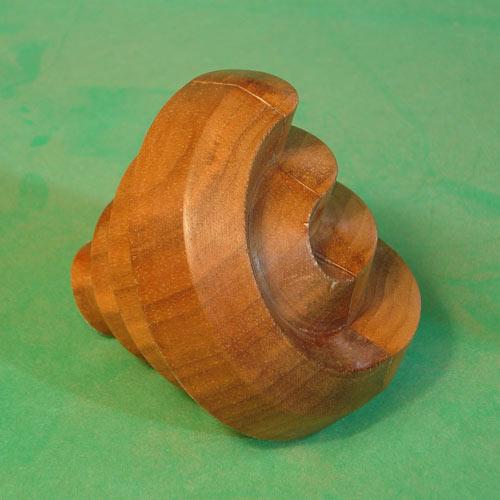David Springett
"Nautilus"
A bowl made from quilted maple based on the Fibonacci sequence.
"Ribbons"
Hexagonally based, the ribbon form has an equilateral triangle cross-section.
The form has been split, twited through 60o and rejoined to produce this shape.

"Blackwood and Steel"
32 equally spaced points (12 major & 20 minor) around the blackwood sphere hold twelve 12mm dia and twenty 9mm dia steel ball bearings. The ratio figure of 0.526 is multiplied by the sphere diameter to provide the distance between the twelve major, equally spaced points on the sphere's surface. Choose any 3 adjacent major points and, using a pencil compass, find the position equdistant from those 3 points. Repeat across the sphere to produce the 20 minor points.
"Spiked Star in Sphere"
Turned from one piece of olivewood a spike sits centrally on each pentagonal face of a dodecahedron inside the spherical shell.

"Ziggurat"
This form is based on an equilateral triangle. The turned cone shape has regular steps cut into the side and base. As the cross-section has rotational symmetry, when the "cone" is split, from apex to the centre of the baseline, the two halves may be twisted through 120o and rejoined to produce this new Streptohedron form.

David Springett
" I use mathematics either as a stimulus or as a tool to help produce many of my turned pieces. Over the past few years I have been turning and developing turned and twisted polygons that I call Streptohedrons. These streptohedrons only require basic geometry to help construct regular polygons, stars or other shapes which have rotational symmetry. I use those shapes as a base for solids of revolution which can be split, twisted and rejoined. The problem with these forms is that they are almost endless in their variations producing the most wonderful unexpected shapes. They are moving into other areas dragging me with them. I wish they would leave me alone. I want to sleep at night. "